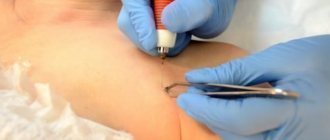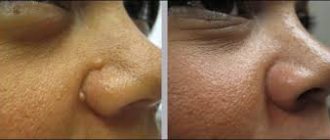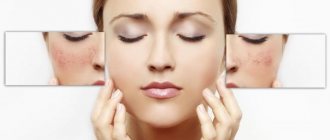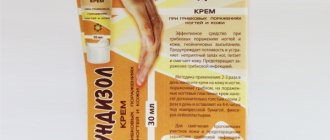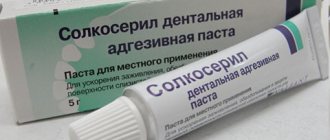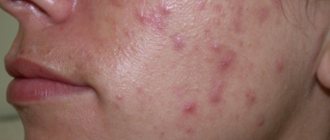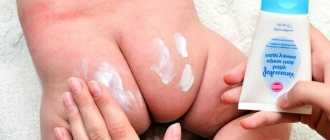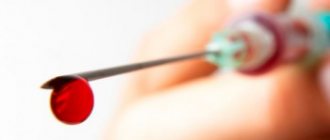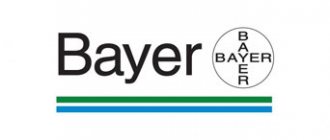Moles and birthmarks are present on the skin of every person. Some of them are embedded in the individual’s DNA, others appear as a result of rapid hormonal activity.
Cryodestruction, a popular method of removing moles
How do you feel about them? Depends on the location of the moles and their “behavior.” Sometimes a birthmark begins to change, threatening a person’s health, or takes on an ugly, unaesthetic appearance.
Such formations can be removed in beauty salons licensed to conduct such procedures or in a medical institution.
When is cryodestruction performed?
Exposing a birthmark to extremely cold temperatures that destroy tissue is called cryodestruction, for which liquid nitrogen is used. The procedure is completely painless and does not require long time or special preparation.
In what cases does mole removal with liquid nitrogen become necessary:
- A mole that rises above the surface of the skin is called a nevus and is mainly a benign neoplasm. She requires observation. With a clear change in color, borders, growth, or appearance of tubercles, the risk of possible degeneration of the nevus into melanoma, a malignant tumor, increases.
- Moles subject to systematic violation of integrity, located in inconvenient places. Constant injury and bleeding over time also lead to malignancy (degeneration).
- Painful raised moles that cause discomfort to their owner.
- Nevi located in visible places, giving an unaesthetic appearance to a person.
Carrying out cryodestruction requires consultation with a qualified specialist, since poor-quality or incorrectly performed removal leads to the appearance of new growths or deep burns.
A mole on the face often causes physical discomfort to the owner
Removal of tumors
Methods for eliminating tumors
In medicine, several methods are used to remove tumors, including the elimination of benign skin tumors: cryodestruction (burning with liquid nitrogen), electroagulation (use of high-frequency current).
Safe and painless removal of tumors
Electrocoagulation is the most preferred method, because after such an operation the tumor can be sent for testing. Neither laser nor liquid nitrogen provide such an opportunity to eliminate tumors. In addition, after exposure to current, small and neat scars remain. This is the safest method used to remove moles, papillomas and other tumors. The advantage of using this method when eliminating tumors is the absence of thermal damage to the skin and can be used as one of the alternatives to modern removal of skin tumors. Radioknife is especially effective for eliminating protruding formations, with a clear contour on the skin.
Removal using liquid nitrogen
Cryodestruction (use of liquid nitrogen) allows for the removal of various tumors on the skin. Despite this, nitrogen, according to many experts, is not the best way to remove it. Cold, like heat, causes a negative effect on the body, and its distribution in the skin and in tissues in general is not controlled. In addition, it is impossible to determine whether the effect was only on neoplasms or whether the effect was broader.
What is the best way to remove tumors?
Which removal method is most preferable? When selecting a method for eliminating tumors, experts proceed from its type. Warts are most often burned with liquid nitrogen. Small papillomas, condylomas, age-related keratomas and nevi (moles) raised above the surface of the skin - using electrocoagulation. If the size of the neoplasm is more than 2-3 cm in diameter, then laser coagulation is used. Flat moles can only be removed surgically.
However, the use of any of these methods to eliminate a tumor requires special sleight of hand from the doctor. The mole often lies deep in the tissue, and therefore it is necessary to accurately calculate the force of impact. A mole that is not completely removed can “grow back.” If the doctor overdoes it with the force of the “blow,” the scar will remain too large.
Recommendations after tumor removal procedures
At the site where the papilloma was removed after cauterization, as well as condylomas, moles, warts and other types of neoplasm, a black crust remains. Under no circumstances should it be wetted for 4-5 days. If the tumor was removed from the skin of the face, you should avoid contact with creams, lotions, and decorative cosmetics on the wound. Do not try to get rid of the scab until it falls off on its own - the healing of the wound will slow down. After the crust disappears, soft, pink skin will appear in its place, which must be protected from sunlight. This is especially important in summer, when the sun is most active. In the morning, afternoon and evening, it is necessary to apply a cream with a high ultraviolet protection factor to the area from which the formation was removed. This should be done until the area matches the color of the surrounding skin. Exposure of injured skin to ultraviolet radiation can lead to the appearance of age spots.
In any case, only a doctor should prescribe recommendations for mole removal. Moreover, the choice of the method by which the tumor will be removed or treated is made individually by OZON-LIFE doctors. After all, three or four different types of moles can occur on the body of one person.
Preparation and removal technique
Preliminary preparation for mole removal with liquid nitrogen does not require special or lengthy procedures. The only thing you need to do is collect anamnesis for the presence of an allergic reaction to medications. Cryodestruction is carried out in a clinic, that is, immediately after the procedure the patient can go home.
Immediately before exposure to cold, the skin is treated with a disinfectant, after which any suitable anesthetic is used.
For superficial formation, use a cotton-gauze swab soaked in liquid nitrogen. It is applied to the mole and pressed lightly. Moles that extend into the deep layers of the epidermis are removed using a cryodestructor - a device consisting of a very thin needle into which nitrogen is supplied. The presence of a sensor allows you to control the procedure time and the amount of reagent.
As a result of cold exposure, the cellular structure of the tissue is destroyed, for which a short time interval of 1–3 minutes is sufficient. The mole turns pale, hardens, and a slight inflammatory process is noted on the first day. The dead tissue is rejected by the body, and in its place a crust forms, under which regeneration processes take place.
Complete restoration of the skin ends after 4–6 weeks. The procedure performed generally leaves no traces or scar changes.
Mole removal with liquid nitrogen is carried out in a hospital setting
Treatment methods
You can remove a birthmark for a child in Moscow using several methods:
- cryodestruction, or exposure to liquid nitrogen;
- removal with a surgical scalpel;
- electrocoagulation;
- laser destruction;
- radio knife
Cryodestruction is the destruction of a formation at low temperatures. As a result of this effect, the nevus gradually dies off, and healthy skin forms under the crust. The procedure is performed under local anesthesia, and in some cases it can be done without it. Several sessions may be required, especially if it is a large skin lesion. Only flesh-colored nevi are exposed to liquid nitrogen.
It is not recommended to remove under 18 years of age!
Conventional surgery is a reliable method, but it is advisable to use it for large moles. This allows you to remove it piece by piece. The disadvantages of such a tool include the high likelihood of scar formation. Therefore, it is rarely used to remove nevi on the face. In addition, the contact method may carry risks of infection; such an operation cannot be called bloodless. Therefore, it is important to take a responsible approach to choosing a specialist and a clinic for removing a child’s mole in Moscow - it is important to give preference to an institution where all antiseptic requirements are strictly observed.
Electrocoagulation allows you to remove a mole due to exposure to high temperatures, namely electric current. As a rule, this procedure is relevant in the presence of nevi on the stem. The electric current seals the capillaries, so there is no risk of bleeding in this case. However, when removing large formations, there is a possibility of scar formation; it is important to check with your doctor whether other methods can be used.
You can also remove a mole from a child in Moscow using the most modern technologies: radio wave or laser exposure. The radio knife allows you to quickly and painlessly eliminate the formation without risks to health or aesthetic defects.
Laser technology is used to remove small moles. It consists of evaporating pathological tissues with a beam of light.
Care and recovery after cryodestruction
Removing a mole requires careful and careful treatment of the affected area.
The dense crust that forms is very important for the successful restoration of the skin; it cannot be removed by force, and should be protected from any mechanical friction; the crust should fall off on its own when the regeneration process under its cover is completed. What not to do during the recovery period:
- wet the affected area, rub with a washcloth and soap,
- lubricate with creams and cosmetics,
- completely eliminate exposure to ultraviolet radiation at the site of exposure,
- remove the crust that has formed, as this often leads to infection.
What can you do to improve wound healing:
- in the first few days, the wound surface is treated with a weak pink solution of potassium permanganate or 3% hydrogen peroxide,
- patients with a hypersensitive skin reaction are allowed a single application of antipruritic creams to the surrounding tissue,
- After the crust falls off, pale young skin is lubricated with sunscreen before going outside.
If removed correctly, after two months, the skin returns to its normal color and does not show any signs of intervention.
Potassium permanganate is used to treat the wound at the site of a mole
How does cryodestruction occur?
The procedure for removing papillomas with liquid nitrogen, although extremely simple, requires some minor preparation. Firstly, on the day on which treatment is prescribed, you should thoroughly wash the area of skin on which the growth is located. Regular personal hygiene products that you use daily are suitable for this. Secondly, if the skin around the papilloma contains a large amount of hair, then it should be shaved off. At the same time, try not to damage the growth.
To apply liquid nitrogen to a growth, an ordinary wooden or plastic stick is most often used, or less often a metal stick with cotton wool or a bandage wound at the end. Its length is slightly longer than the length of the nitrogen vessel, which allows you to dip the cotton or gauze end into the liquid. After the cotton wool is abundantly saturated with nitrogen, it is applied to the formation. Contact with an individual wart or papilloma occurs within 1 to 5 seconds, after which the procedure is considered completed.
After freezing papillomas with nitrogen, do not wet them for the next 2 to 3 days, avoid contamination and possible injury. Already in the first day the growth will turn black, and after a few more days it will disappear. Sometimes a small wound remains in its place, which needs to be treated with iodine for several days.
Possible complications and adverse effects
A competent approach and intervention by a qualified doctor reduces the risk of complications to a minimum. However, it is impossible to provide guaranteed protection against an unpleasant outcome. What consequences are possible after cryodestruction:
- an allergic reaction to disinfectants or anesthetics, which is the result of an incompletely collected anamnesis,
- cold burn and destruction of adjacent tissues due to incorrectly selected time and depth of exposure,
- infection of the wound during the recovery period with early mechanical removal of the crust,
- micro scars and scars at the site of exposure.
When to sound the alarm and see your doctor for a follow-up visit:
- if signs of inflammation do not decrease in intensity after a day or increase (swelling, hyperemia, and pain increase around the wound),
- bleeding is observed in the next 2–3 days after the intervention,
- after a while, cloudy contents resembling pus appear from the wound,
- the temperature rises.
Such manifestations may indicate a not entirely successful removal.
An increase in temperature after cryodestruction is a reason to immediately consult a doctor
The essence of the procedure
Cryodestruction of papillomas, or cryotherapy, is a simple but effective manipulation aimed at freezing problematic formations on the face and body. Liquid nitrogen is used for cryotherapy. The temperature of its effect on the problem area reaches -195°C. This causes crystallization of the defect with its further self-removal.
Cauterization of papillomas with liquid nitrogen has many advantages:
- targeted impact, exclusively on the problem;
- the procedure does not injure tissue near the tumor;
- frozen papilloma does not need to be removed or torn off, it should fall off on its own;
- the technique is safe for the patient’s health;
- after cauterization, no special care or medication is required;
- after high-quality freezing of papillomas, scars rarely remain;
- minimal risk of infection, the procedure is easily tolerated and does not cause pain;
- affordable cost of the procedure.
The only significant disadvantage of removing papillomas with nitrogen is the inability to control the depth of gas penetration. Thus, with superficial exposure there is no guarantee of complete elimination of the problem, and deep penetration of the product provokes residual scars on the skin.
Otherwise, there are no complaints, and the reviews from patients who have used cryodestruction to remove papillomas are only positive.
Advantages and disadvantages
Cryodestruction of papillomas has a large number of positive reviews about the use of therapy.
Removing papillomas that appear on the skin with cold practically does not imply the appearance of scars after cauterization.
You can remove papilloma with nitrogen in various ways - at home or with the help of medical specialists , as well as beauty salons, the price of each option will be different, it depends on the method of implementation (hardware or manual), the cost of the drug, and additional funds.
Your doctor can advise you where to remove tumors with liquid nitrogen.
Special products can be prescribed to treat the skin at home; cryodestruction is increasingly being carried out by patients on their own.
A can of medicine is bought at a pharmacy, you can buy it without a doctor’s prescription, the active ingredient is liquid gas. It must be remembered that before you start using it, you must study the contraindications listed in the instructions for the drug.
Indications and contraindications for papilloma removal
Removal of papillomas with liquid nitrogen can be carried out not only at the request of the patient, but also if there are medical indications. These include:
- Suspicion of the malignancy of the wart;
- The presence of large and multiple growths;
- The appearance of painful and unpleasant sensations when pressing on the wart;
- The growth of neoplasms and the appearance of new growths;
- Bleeding from the wart or surrounding tissue.
Like any destructive method, cauterization of warts with liquid nitrogen has a number of limitations, in the presence of which cryodestruction can harm the patient’s health and lead to complications. Contraindications to cryotherapy for papillomas include:
- Increased sensitivity of the skin to cold exposure;
- Pregnancy, lactation period;
- The presence of rashes, inflammation and violations of the integrity of the epidermis in the area of the procedure;
- The course of acute inflammatory and infectious processes;
- Individual nitrogen intolerance;
- Chronic diseases in acute form;
- Epilepsy and other mental disorders;
- Increased body temperature;
- Heart failure, unstable blood pressure, hypertension.
